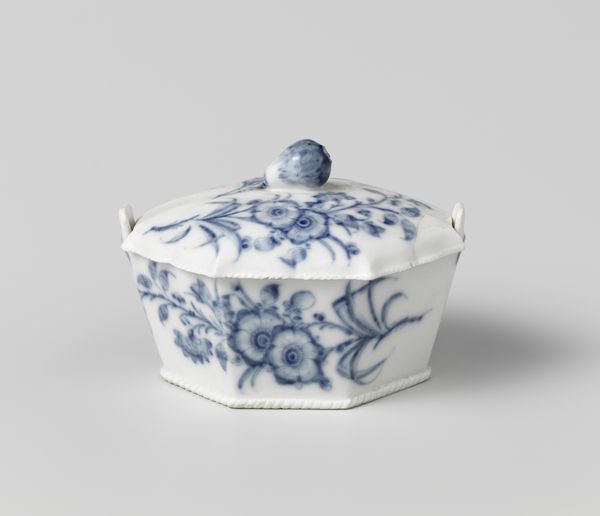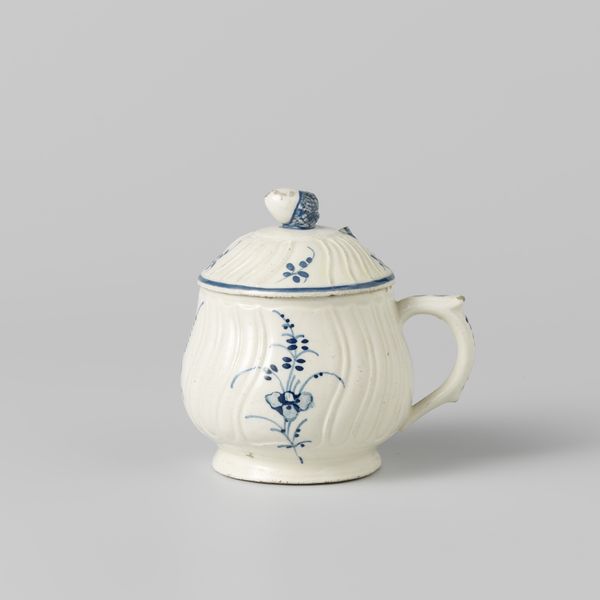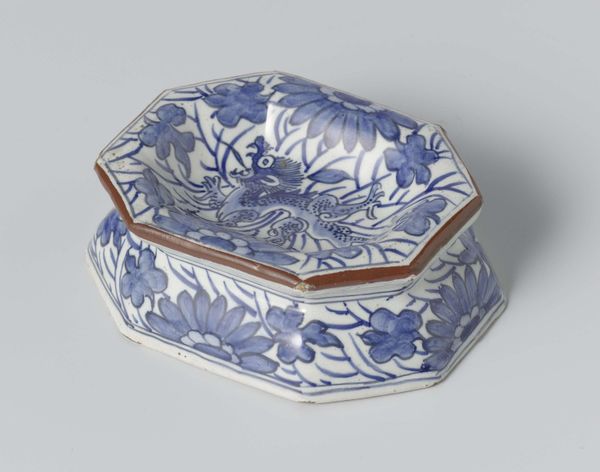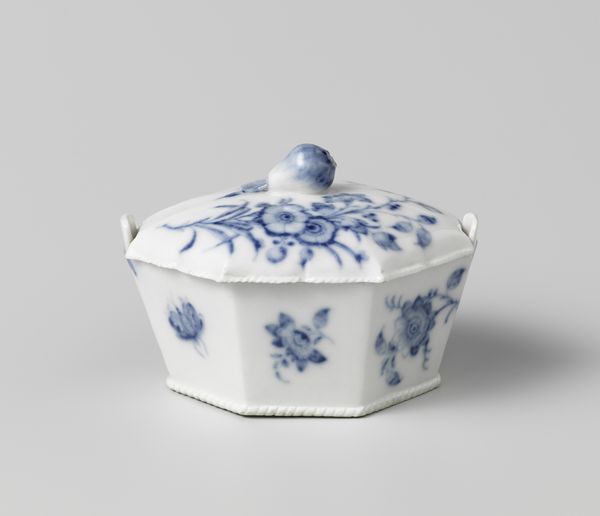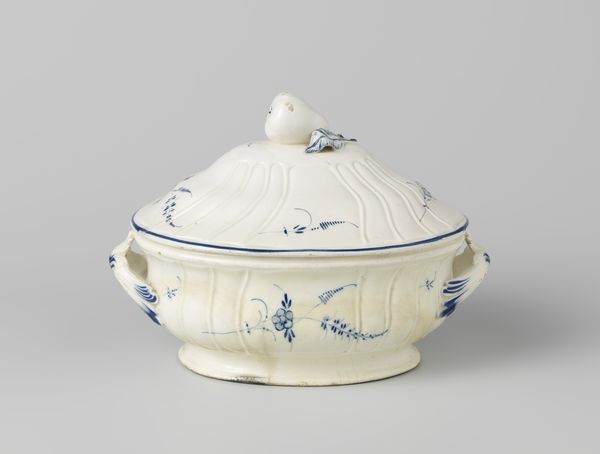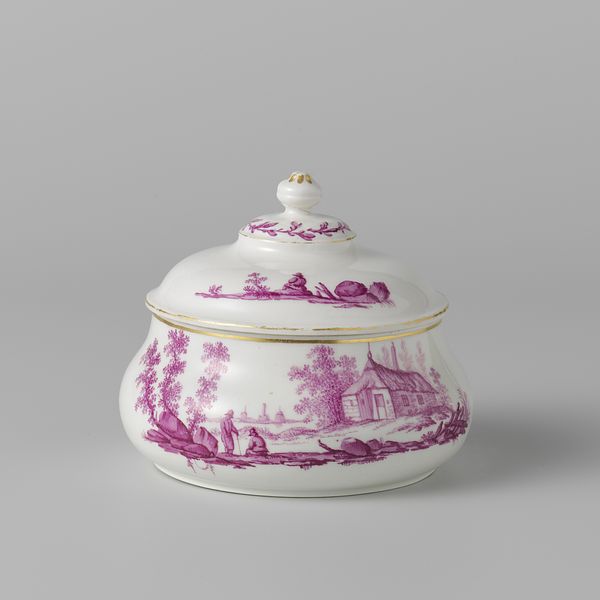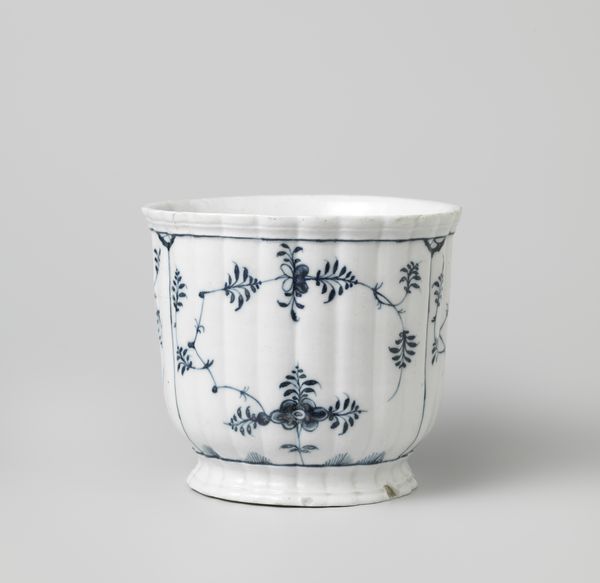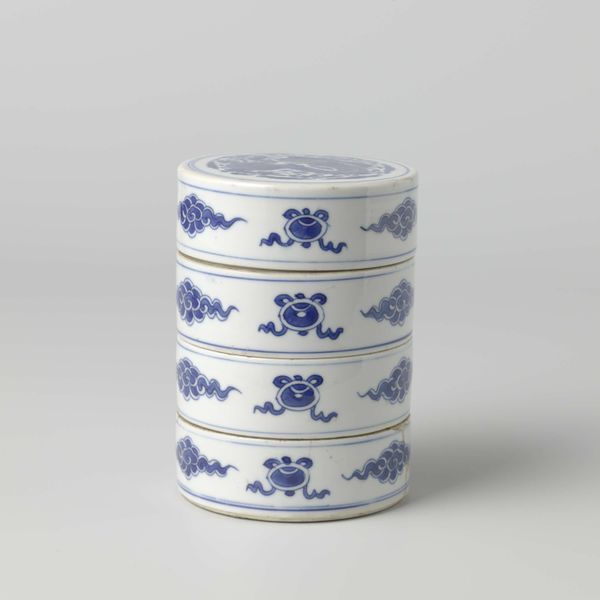
Dimensions: height 7 cm, width 8 cm, width 6.8 cm, depth 7.4 cm, height 4.5 cm
Copyright: Rijks Museum: Open Domain
This small, lidded pot with handle and floral decoration was made in Loosdrecht, likely sometime in the late 18th century. The town of Loosdrecht became an important center for porcelain production in the Netherlands, as Dutch elites sought to emulate the fashion for porcelain tableware that was popular throughout Europe at the time. In the 1770s, the Loosdrecht factory was founded with the explicit goal of producing porcelain domestically, thus curtailing the need for expensive imports. Its establishment catered to a growing sense of national economic pride. The modest decoration of stylized flowers, painted in cobalt oxide, reflects an aesthetic associated with the rising middle classes rather than the aristocracy. Analyzing the cultural and economic context around the making of this object allows us to interpret its deeper meaning. Primary sources like factory records and period inventories can help us learn more about the specific social forces at play here.
Comments
No comments
Be the first to comment and join the conversation on the ultimate creative platform.

